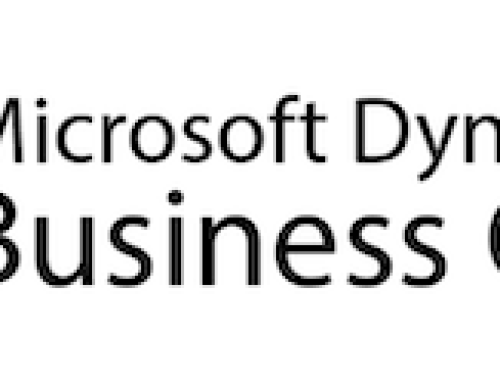
Microsoft’s announcement of Dynamics GP’s end of support by December 31, 2029, has many organizations evaluating their next steps. While planning for the future, it’s crucial to maintain optimal system performance and security. Here are some steps to keep your Dynamics GP system healthy and secure.
Regular System Maintenance
Just like your car, Dynamics GP lasts longer and runs better with regular maintenance. Performing these steps on a regular schedule is recommended. Reach out to the CAL GP experts if you have questions or would like help with maintenance tasks.
-
Database Maintenance Schedule
- Schedule regular database maintenance, for example:
- Daily: Backups and monitor error logs
- Weekly: Index maintenance, consistency checks, temporary table cleanup
- Monthly: Database file management, security audits, SQL Agent Jobs
- Quarterly: Performance tuning, storage planning, version and patch maintenance
- Monitor system performance and address issues promptly
- Real-world example: A manufacturing company avoided system crashes by performing weekly maintenance checks during off-peak hours. They rebuilt indexes and optimized performance, ensuring smooth month-end processes and preventing delays when hardware stress was detected.
- Schedule regular database maintenance, for example:
-
Performance Monitoring
- Watch for signs of system slowdown, especially during peak usage
- Monitor available disk space and system resources
- Track processing times for key business functions
Let’s talk BACKUPs – Your Best Friend

Backups are absolutely vital for your Dynamics GP database, as they’re your protection against data loss, corruption, and business interruption. Dynamics GP stores your financial data, inventory, customer information, and other critical business data. Without proper backups, you risk losing this information permanently in case of failure. The average cost of downtime for mid-sized businesses can run into thousands of dollars per hour.
Smart Backup Strategies
- Implement daily backups of all company databases
- Test backup restoration procedures regularly – IMPORTANT – many businesses skip this step and have issues when they need to restore from a backup.
- Store backups in multiple secure locations
- Data Cleanup and Organization
- Archive old data to improve system performance
- Regularly clean up temporary files and obsolete records
- Maintain organized file structures
Let’s look at a real-world example and why good backups are crucial:
Scenario:
A retail company had one of its primary servers fail unexpectedly, leading to the potential loss of crucial sales and inventory data. This could have resulted in significant disruptions to order processing, stock management, and customer service, especially during a high-traffic sales period like Black Friday.
Fortunately, the company had implemented a comprehensive backup strategy, including daily backups of all transactional data, product inventory, and customer information. The backups were stored in multiple secure locations—both on-site and in a remote cloud system, ensuring that even if one backup method failed, another could be used.
The backup strategy ensured business continuity. Thanks to the multiple backup methods and regular testing of restore procedures, the company was able to restore the data to the previous day’s backup with minimal downtime. By doing so, they were able to continue processing orders, manage inventory efficiently, and keep customer satisfaction intact—all without significant financial or operational setbacks.
Security Measures
A comprehensive security strategy is not just a defensive measure, but fundamental for maintaining a healthy Dynamics GP environment. Regular security reviews ensure that access rights evolve with your organization, preventing unauthorized data access and maintaining the principle of least privilege. Strong password policies and timely security patches close potential vulnerabilities that could otherwise compromise your financial and operational data. Staying current with system updates through 2029 not only provides new features but also protects against emerging threats in an ever-evolving cybersecurity landscape. The disciplined approach of testing updates in controlled environments prevents disruptions to critical business processes, while thorough documentation of system modifications creates an audit trail essential for troubleshooting, compliance, and institutional knowledge preservation. Together, these security measures work synergistically to safeguard your Dynamics GP system’s integrity, performance, and longevity—ultimately protecting the business operations that depend on it.
Here is a handy checklist for you to follow to maintain optimal health of your Microsoft Dynamics GP system

Dynamics GP System Maintenance Checklist
Daily Tasks
| Task | Description | Priority |
| ✓ Database Backups | Verify full database backups completed successfully (all company DBs + DYNAMICS) | Critical |
| ✓ Transaction Log Backups | Ensure log backups are running at defined intervals (if using Full recovery model) | Critical |
| ✓ Review SQL/GP Error Logs | Check for warnings, errors, or unusual activity | High |
| ✓ Verify System Availability | Confirm all services are running and users can access the system | High |
| ✓ Monitor Disk Space | Check that sufficient space exists on database and backup drives | Medium |
| ✓ Review Job Failure Alerts | Check for any failed SQL Agent jobs or scheduled tasks | Medium |
| ✓ Validate Integration Processes | Ensure all integrations with third-party systems completed successfully | Medium |
Weekly Tasks
| Task | Description | Priority |
| ✓ Index Maintenance | Rebuild or reorganize fragmented indexes (focus on tables >30% fragmentation) | High |
| ✓ Update Statistics | Update statistics on frequently modified tables | High |
| ✓ Database Consistency Checks | Run DBCC CHECKDB on all databases to verify integrity | High |
| ✓ Clean Up Temporary Tables | Remove stale temporary objects and clear tempdb if growing excessively | Medium |
| ✓ Verify Backup Integrity | Test restore capabilities for at least one backup set | High |
| ✓ Security Audit | Review failed login attempts and unusual access patterns | Medium |
| ✓ Check System Resource Usage | Monitor CPU, memory, and I/O utilization trends | Medium |
| ✓ Review Open Batch List | Check for and resolve stuck or abandoned batches | Medium |
Monthly Tasks
| Task | Description | Priority |
| ✓ User Access Review | Verify user permissions and remove/modify access for departed/changed staff | High |
| ✓ Security Patch Assessment | Review and plan for available security updates | High |
| ✓ Review Database Growth | Monitor size trends and plan for future storage needs | Medium |
| ✓ Performance Tuning | Identify and optimize slow-running queries or reports | Medium |
| ✓ Archive Closed Periods | Archive or purge historical data according to retention policy | Medium |
| ✓ Check SQL Agent Jobs | Review all maintenance jobs and update as needed | Medium |
| ✓ Verify Disaster Recovery Plan | Ensure all recovery documentation is current | High |
| ✓ Test Failover Procedures | If using high availability, test failover capabilities | High |
Quarterly Tasks
| Task | Description | Priority |
| ✓ Comprehensive System Review | Holistic assessment of all system components and configurations | High |
| ✓ Major Update Planning | Evaluate and schedule service packs or version upgrades | High |
| ✓ Test Restore from Backup | Full test restore to verify complete recoverability | Critical |
| ✓ Third-Party Add-on Review | Check for updates to integrated third-party products | Medium |
| ✓ Security Penetration Testing | Test system security against potential threats | High |
| ✓ User Training Assessment | Identify knowledge gaps and plan refresher training | Medium |
| ✓ Hardware Performance Review | Evaluate if hardware meets current needs or requires upgrades | Medium |
| ✓ Documentation Update | Update all system documentation, including customizations | Medium |
Annual Tasks
| Task | Description | Priority |
| ✓ Full System Audit | Comprehensive review of all security settings and access rights | High |
| ✓ Disaster Recovery Drill | Complete test of full system recovery procedures | Critical |
| ✓ Long-term Storage Planning | Evaluate archiving strategy and storage requirements | Medium |
| ✓ Compliance Review | Ensure system meets all regulatory requirements | High |
| ✓ Strategic System Planning | Evaluate future needs and plan for major upgrades/migrations | Medium |
| ✓ Vendor Support Review | Verify support contracts and renewal dates | Medium |
| ✓ Business Continuity Testing | Test business processes under disaster scenarios | High |
| ✓ System Documentation Review | Complete overhaul of all system documentation | Medium |
An Ounce of Prevention…
Maintaining a healthy Dynamics GP system through 2029 requires a balanced approach of regular maintenance, proactive monitoring, and strategic planning. By following these practices, you can ensure your system continues to serve your business needs effectively while you evaluate your future ERP strategy.
CAL Business Solutions is here to help you maintain your Dynamics GP system and plan for the future. Our team of experts can assist with these best practices and help you develop a practical plan for your organization’s needs. Give us a call and schedule a GP health check with our team today.
By CAL Business Solutions Inc., Connecticut Acumatica & Microsoft Dynamics GP / 365 BC Partner, www.calszone.com
















